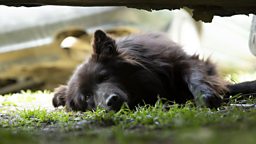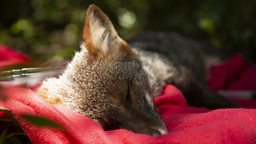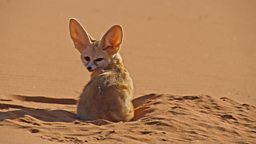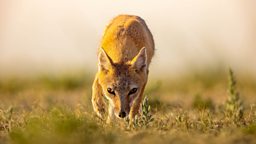Defending Darwin鈥檚 fox in Chile
By Nia Roberts, Producer and Director for Dogs in the Wild
domestic dogs, that pose one of the greatest risks to their survival.
Of the 37 species of wild dogs, around a third are endangered or near threatened. Threats such as habitat loss and conflict with humans can all have a devastating impact on their populations. For some wild canids it is their cousins, domestic dogs, that pose one of the greatest risks to their survival.

One such species at risk is the Darwin’s fox. It is one of the most endangered fox species and can only be found in a few areas of Chile.
A team of scientists are dedicating their work to understanding this elusive fox
These rare canids are threatened by a large population of domestic dogs which are allowed to roam freely in the woods and forests which the Darwin’s fox also calls home.
These domestic dogs can pass on diseases such as rabies and canine distemper which can be fatal to the foxes. However, there is hope. A team of scientists are dedicating their work to understanding this elusive fox and the impact disease and domestic dogs are having on their health and population size.
Free vaccinations are provided for domestic dogs to try to stem the flow of diseases that could reach the foxes. Along with vaccinations, the team also monitors the foxes themselves. For this the researchers (and the film crew) had to travel to one of the most remote areas of Chile, Ahuenco park on the west coast of Chiloe Island just off the coast of mainland Chile.

Here the team would trek over 7km everyday out into the forest to check humane traps set to capture the foxes. Once caught, the foxes would be sedated and as quickly and carefully as possible the team would work to collect key information on the fox’s health. They would also take blood and other samples. The fox would also be fitted with a microchip so it can be monitored from year to year.
a rare and charismatic fox
Once the work was complete and the sedation reversed, the fox would be released and, instead of running off, would remain near to the researchers and film crew for a few minutes allowing them to capture footage of a rare and charismatic fox.




